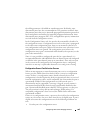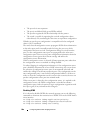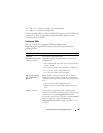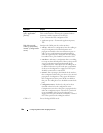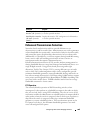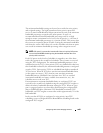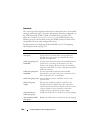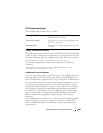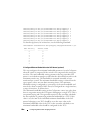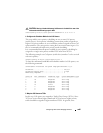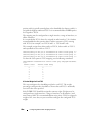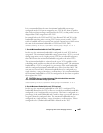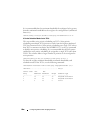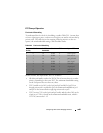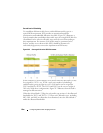
Configuring Data Center Bridging Features 1003
ETS Configuration Example
This example configures four classes of traffic:
1. Enable Trust Mode on an Interface
The following command enables the use of the dot1p priority of the incoming
packet. It may be configured on a single interface, a range of interfaces or all
interfaces. By default, ports are configured to trust the incoming user priority.
console(config-if-Te1/0/1)#classofservice trust dot1p
To show the configured trust mode on an interface, use the following
command:
console#show classofservice trust tengigabitethernet 1/0/1
Class of Service Trust Mode: Dot1P
2. Map Dot1p Priority to CoS Queues
This step maps dot1p priorities to the CoS queues. This mapping places the
incoming packet in the selected CoS queue based on the dot1p priority. It
may be configured on a single interface, a range of interfaces, or all interfaces.
To ensure lossless behavior, the dot1p priority must be mapped one to one to
a CoS queue for the lossless priorities. Up to two lossless priorities may be
configured on N4000 switches. CoS queue 7 is reserved by the system and is
not assignable. It is generally recommended that the administrator utilize
CoS queues 0-3 as CoS queues 4-6 may be utilized by the system for other
types of system traffic, e.g. routing protocol PDU handling. Frames with
different user priorities assigned to a single CoS queue receive equal
treatment.
This example maps user priorities 0, 1, and 2 to CoS queue 0 (background or
best effort traffic), user priorities 3 and 4 to CoS queues 1 and 2 (iSCSI
traffic), and all other priorities to CoS queue 2 (low latency and network
control traffic).
Best effort traffic CoS Queue 0 for untagged and VLAN-tagged
frames with VPTs 0, 1, and 2
Lossless iSCSI traffic CoS Queues 1 & 2 for VLAN tagged frames with
VPTs 3 & 4 respectively
Expedited traffic CoS Queue 3 on VLAN tagged frames with VPTs
5, 6, and 7



